What is transactional email and what is it used for?
One of the questions we hear most often at Postmark is: what is transactional email, and how is it different from other types of email? Well, friends, seeing as we've been dealing with transactional email since 2009, we’re happy to answer that question in lots of detail and with plenty of examples.
What is transactional email? A definition #
Transactional emails are messages that are sent in response to an action a user takes on a website or application. They contain data or content that is specific to that user, and are typically sent to individuals one at a time. Examples include:
- Password reset emails
- Account creation emails
- Welcome emails
- Shipping confirmations
- Payment invoices
- Purchase receipts
- Order confirmation emails
- Payment failure notifications
In general, recipients expect to receive transactional emails; and in many cases, they will actively refresh their inbox until the message arrives.
Transactional vs. marketing email #
Transactional emails contain user-specific content and are typically sent to individuals one at a time, whereas marketing emails (also called promotional, broadcast, commercial, or bulk email) are mass distributions of the same message to many recipients simultaneously. The most common types of marketing email include:
- Newsletters
- Limited-time offers
- Sales campaigns
- Event announcements
- Vouchers and giveaways
Most companies send both transactional and marketing emails, and rely on a combination of marketing automation, email marketing, CRM, and email delivery services to connect with their audience. It’s also possible to bring marketing, sales, and transactional messages together in one platform.
💡 Since Postmark is part of ActiveCampaign, we recommend taking them for a spin if you’re looking to manage all your emails in a single place.
You can see the difference summarized in this image:
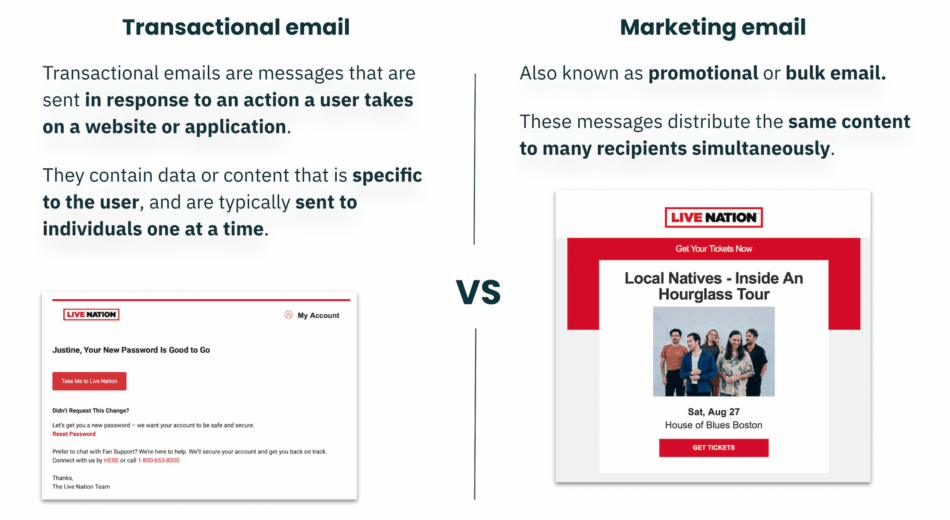
Personal sidenote: spotting the differences between a transactional and a marketing email can be tricky, even for someone who’s been working in email for 15+ years (me!).
Prior to joining the Postmark team, I used to think that any email that didn’t require an unsubscribe link was a transactional email. But it turns out receivers like Gmail and Yahoo look at email differently than I do: they pay an awful lot of attention to the content (is it specific to that user?) and how the message is distributed (to many people at once, or one person at a time?) when determining whether or not an email belongs in the “bulk” category.
Here is a quick clip of me talking about the difference between transactional and marketing email, if you'd like to hear my voice instead of just reading my words:
What is transactional email used for? 5 use cases #
Transactional emails are the foundation of most online businesses, connecting them to individual users and customers.
These emails are often treated as the ‘set it and forget it’ notifications that website and product owners must implement so the business can function, but do not underestimate their larger impact on customer experience and retention. If you’ve ever been locked out of an account and waited for a password reset email that never came, you’ll know how a simple missing email can be the source of great frustration.
Although this is not a comprehensive list, we tend to group transactional emails into:
1. Emails that help manage user accounts and logins
2. Emails that are directly tied to payment processes
3. Emails that are triggered by specific events
4. Emails that deliver content a user requested
5. Emails that deliver useful updates and insights about product usage
1. Emails that help manage user accounts and logins #
Examples: account created, welcome email, password reset, 2FA enablement, magic sign-in links, new login attempt notifications, new user added, trial expiring.
This category of transactional email covers the notifications sent to users and customers when they create and manage an account with a provider. These emails include the initial welcome notification a user gets when signing up, and the password resets or magic link messages they receive if they forget their credentials. Account-related emails also include all the notifications sent to an admin to alert them of new people/teammates joining the account or trials expiring.
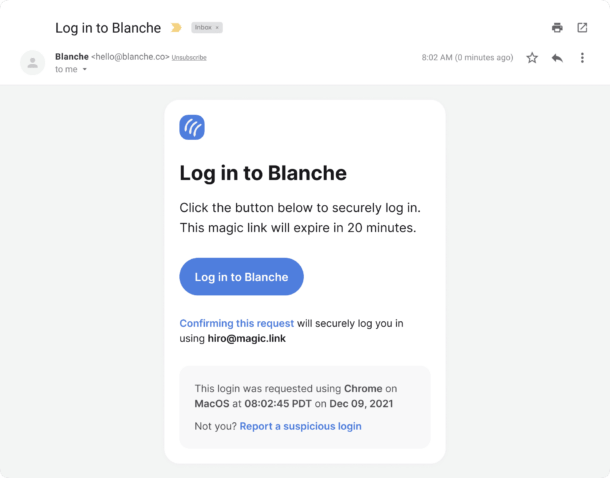
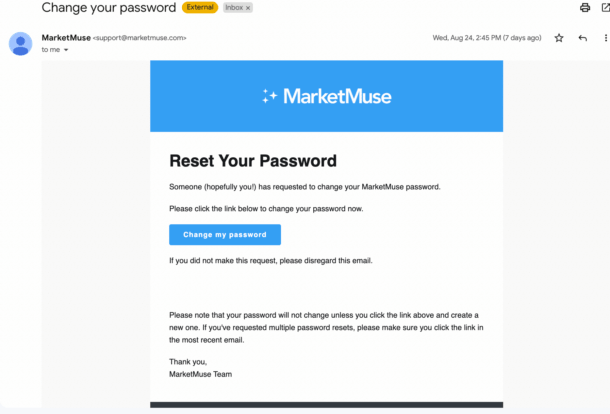
2. Emails that are directly tied to payment processes #
Examples: invoices, receipts, payment failure (dunning), credit card expiration, subscription upgrade/downgrade/cancellation/renewal.
Some of the most well-known transactional emails are the ones tied to a transaction (hence the name). For example, when customers make a purchase online, they’ll usually receive an order confirmation and/or a receipt; if a recurring payment fails or there are issues with payment processing, they might receive a payment failure notification (known as a dunning email) instead.

3. Emails that are triggered by specific events #
Examples: comment notifications, event reminders, calendar notifications, shipping confirmations and updates.
These types of transactional emails are similar to mobile phone push notifications, but they happen in an email inbox instead.
Unlike the other transactional emails we’ve seen so far, event-driven notifications aren’t typically triggered by an action taken by the recipient; instead, these notifications can let the recipient know about something that has happened (e.g. they have been tagged in a social media post or a package they’re expecting has been shipped or delivered) or remind them of something happening soon (e.g. the concert they purchased tickets for is coming up tomorrow).
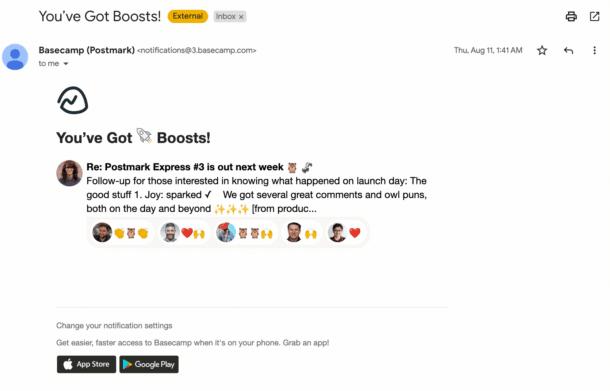
4. Emails that deliver content a user requested #
These types of transactional emails contain information that a user has explicitly requested as part of their product or website experience. There are hundreds of requests that can fall under this category: from CSV or data export/download to return labels, from flight itinerary details to e-books, PDFs, or any other downloadable goods a user wants to receive.
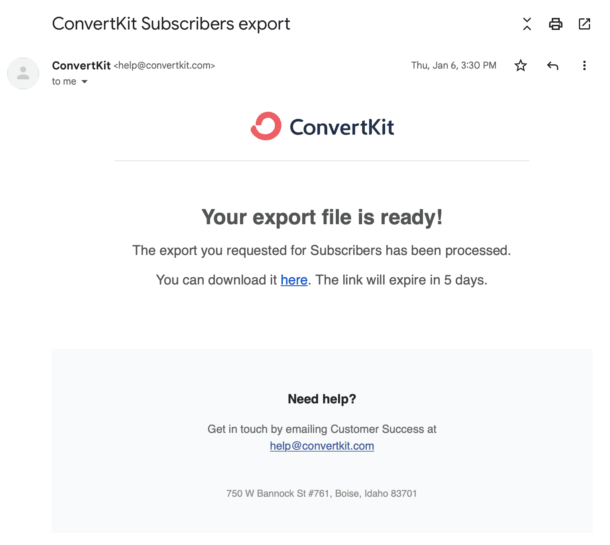
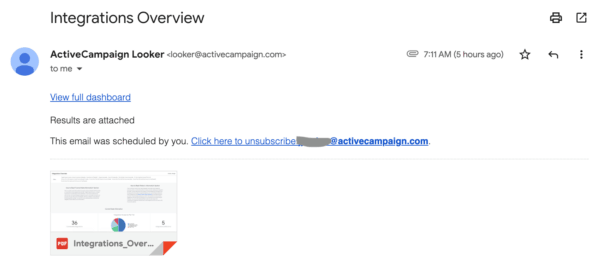
5. Emails that deliver useful updates and insights about product usage #
Examples: summaries, reports, digests
This category includes summaries, reports, and digests for users who want to stay on top of important notifications without cluttering their inbox with individual emails. Some of these emails can be straightforward logs of the events that have occurred during a specific timeframe (e.g. daily, weekly, or monthly account activity information); others can even act as an extension of the product experience, and be rich with personalized content.
💛 Pro tip: most folks in the industry consider reports and digests transactional, which is why we included them here—but if you are using Postmark to send this specific format of email, we recommend sending it over a Broadcast Stream instead.
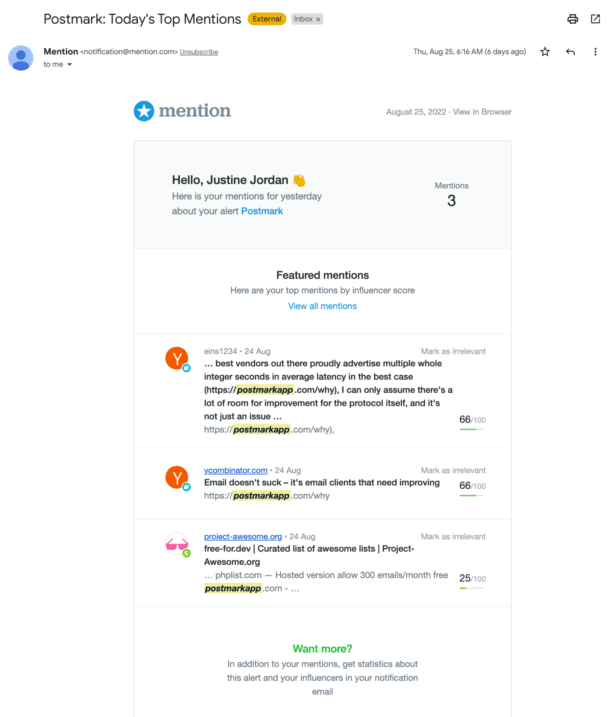
Final thoughts + transactional email resources #
Whether you have a small team with a mobile application or a robust e-commerce company with thousands of products, transactional emails can greatly benefit your business—provided they get delivered reliably and are clear to follow. If crucial emails are delayed, keep landing in the spam folder, or are just not working as intended, your customers’ loyalty to your business might eventually come to an end.
At Postmark, we’re passionate about transactional email and the importance of doing it right—it was our sole focus for our first decade as a company. Over the years, we collected a lot of resources you might find useful right now:
To send transactional emails quickly and reliably, you need a trustworthy provider with excellent deliverability. If you don't know how to choose between the many available delivery services, start by comparing the pros and cons of the 6 top transactional email services including Postmark (hi 👋), Amazon SES, and Mandrill by Mailchimp.
If you'd like to learn more about optimizing your transactional email, check out our extensive email design guides and our deep dive into transactional email best practices: they will teach you everything you need to know to create beautiful and effective transactional emails.
If you need inspiration and practical advice, follow the link to see some transactional email examples from our team—these are the emails we send out from Postmark, using Postmark, to grow our business and keep our customers happy.
And finally: if you're looking to send transactional emails but don’t know where to start, here are ten free and open-source transactional email templates for your business you can simply copy-paste and start using today.
Looking for a transactional email delivery service you can trust?
We’ve got you covered. Postmark delivers your transactional email to customers on time, every time.
After reading this article, you should know... #
What is a transactional email? #
Transactional email is a type of automated, non-promotional email that is triggered by events, interactions, or preferences within a service and is delivered to individuals one at a time.
What is the difference between transactional and marketing email? #
Transactional emails contain user-specific content and are sent to individuals one at a time. Marketing emails, also called bulk or promotional emails, are mass distributions of the same message to many recipients simultaneously—including newsletters, limited-time offers, or sales campaigns.
What are the most common types of transactional email? #
The most common types of transactional email you might have received (or sent) include:
- Password reset emails
- Account creation emails
- Welcome emails
- Shipping confirmations
- Payment invoices
- Purchase receipts
- Order confirmation emails
- Payment failure notifications
Who is the best transactional email provider? #
What separates an average service provider from a great one may depend on what you and your business need when it comes to your transactional emails. The most renowned players in the space include Postmark (hi!), Amazon SES, SendGrid, MailGun, and Sparkpost.


